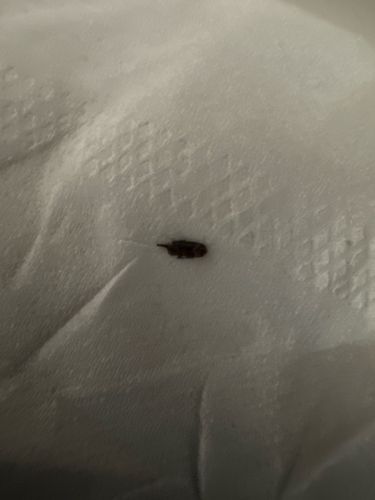Fly (likely a house fly or similar common fly species)
Scientific Name: Musca domestica (for house fly, common species), or other genera/species within Diptera given image clarity
Order & Family: Order: Diptera, Family: Muscidae (for house flies) or other relevant families within Diptera
Size: Typically 4-7 mm in length, though size varies significantly by species within Diptera

Natural Habitat
Flies are found in almost all terrestrial habitats worldwide, especially where there is decaying organic matter for feeding and breeding. Common species like house flies are ubiquitous in human environments, including homes, farms, and landfills.
Diet & Feeding
Flies have diverse diets, including decaying organic matter, bodily fluids, food scraps, and nectar. House flies, for example, feed on a wide range of decaying materials, including garbage and feces, and will regurgitate enzymes to liquefy solid food.
Behavior Patterns
Flies are typically active during the day. They are known for their rapid flight and ability to land on various surfaces. They undergo complete metamorphosis with eggs, larvae (maggots), pupae, and adults.
Risks & Benefits
Risks: Many fly species are vectors of diseases (e.g., salmonella, E. coli, cholera) as they can transfer pathogens from their feeding sites to human food. They can also be a nuisance. Benefits: Some fly species are important pollinators, decomposers, or valuable in forensic entomology. Larvae of some species are used in maggot therapy.
Identified on: 8/30/2025